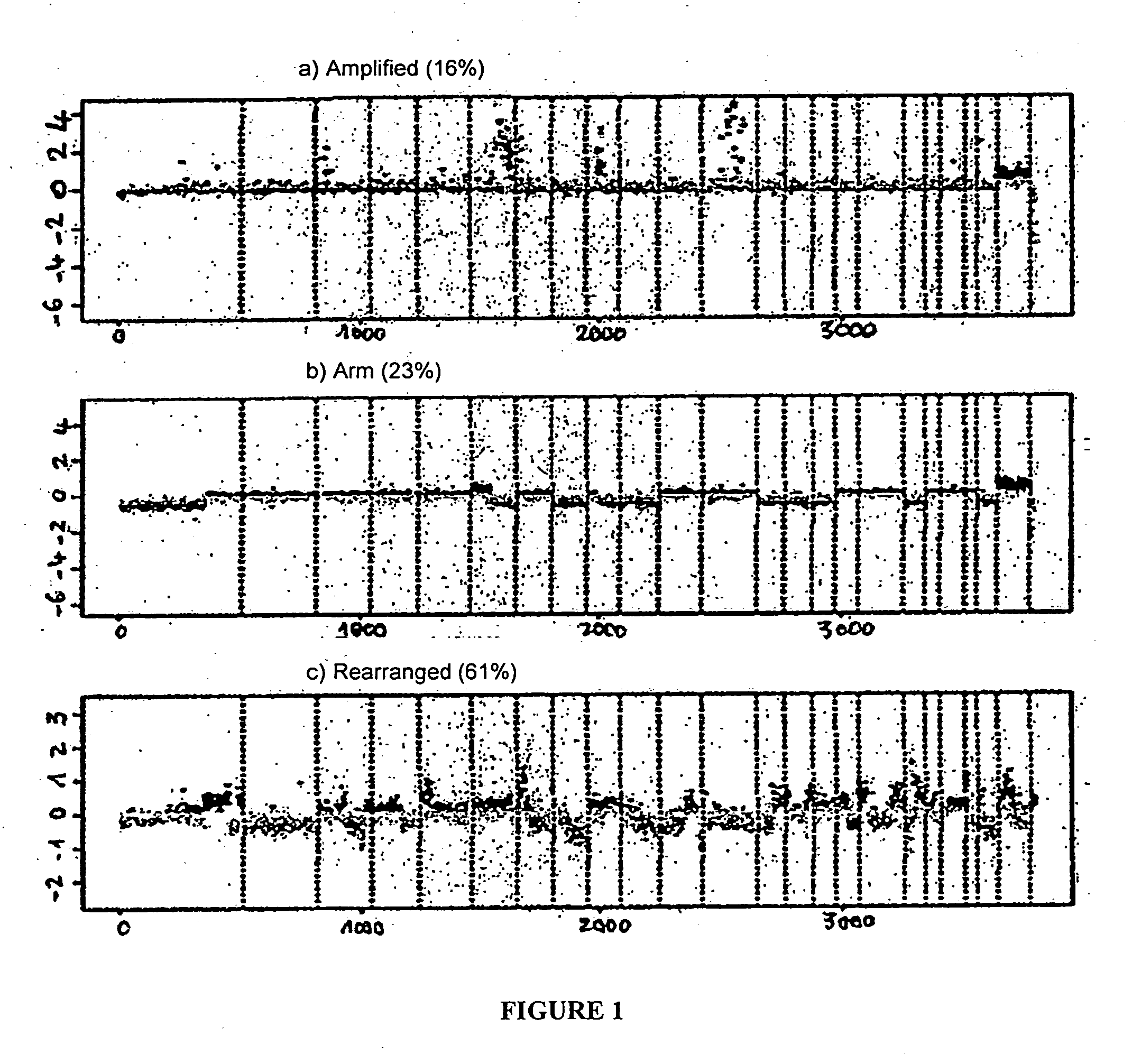Prognostic molecular signature of sarcomas, and uses thereof
- Summary
- Abstract
- Description
- Claims
- Application Information
AI Technical Summary
Benefits of technology
Problems solved by technology
Method used
Image
Examples
example 1
Pool of the Present Invention
Patients and Samples
[0097]The database of the French sarcoma group (groupe sarcome Français, GSF) as an entity of Conticabase (www.conticabase.org) contains the data of soft tissue sarcomas in adults treated in 11 centers with the description of the patients, of the primary tumors, of the treatments, of the follow-up and of the tumor samples. This database contained about 3800 cases at the time of the study. All the cases were reviewed by the subgroup of pathologists and were classified according to the WHO 2002 classification using histology, immunohistochemistry and cytogenetics and molecular genetics when this was necessary. For this study, soft tissue sarcomas without recurrent chromosomal translocations were selected, for which a frozen tissue sample of the untreated primary tumor was available. Finally, the biological samples obtained from 183 patients described in Table 2 below were investigated.
TABLE 2CharacteristicTumor group (n = 183)p valueAve...
example 2
Prediction of the Appearance of Metastases in Sarcomas by Means of CINSARC
[0116]The correlation of the CINSARC expression signature with the appearance of metastases was evaluated in the entire group of the study (183 sarcomas). Group analysis made it possible to classify the tumors in three subgroups (subgroups 1, 2, 3), with a significant difference in appearance of metastases (FIG. 2). Multivariate analysis showed that the tumors of subgroup 3 have triple the risk of metastases in comparison with the tumors of subgroup 1 (Kaplan-Meier analysis; HR=3.01; 95% CI [1.8-5.2]; p−3). A multivariate analysis taking into account other standard prognostic factors, such as the histologic type, FNCLCC tumor grade, size of the tumors, localization, invasion of vessels, nerves or bones, sex and age, also showed a three times greater risk of metastases for subgroup 3 compared with subgroup 1 (Cox model; HR=3.1; 95% CI [1.8-5.4], p−3). These results showed that the CINSARC signature is an indepe...
example 3
Prediction of the Appearance of Metastases in Other Cancers by Means of CINSARC
[0121]The predictive value of CINSARC in other sarcomas was tested and a series of 32 GISTs was analyzed (YAMAGUCHI et al., J; Olin. Oncol., 26 (25): 4100-4108, 2008). As shown in FIG. 3, the CINSARC signature permitted an unsupervised hierarchical group analysis leading to two groups of GISTs with a different prognosis (p<10-3). Interestingly, this classification is independent of localization even if the GISTs of the small intestine and those of the stomach form two separate groups in each different prognosis group.
[0122]As the CINSARC signature is composed exclusively of genes involved in chromosome integrity and expression is associated with chromosomal imbalances, the CINSARC signature could also have a prognostic value for greatly rearranged tumors, such as breast carcinomas. Consequently, two series of breast cancer (78 and 295 cases) of the Cancer Institute of the Netherlands (VAN'T VEER et al., 2...
PUM
| Property | Measurement | Unit |
|---|---|---|
| Level | aaaaa | aaaaa |
Abstract
Description
Claims
Application Information
 Login to View More
Login to View More - R&D
- Intellectual Property
- Life Sciences
- Materials
- Tech Scout
- Unparalleled Data Quality
- Higher Quality Content
- 60% Fewer Hallucinations
Browse by: Latest US Patents, China's latest patents, Technical Efficacy Thesaurus, Application Domain, Technology Topic, Popular Technical Reports.
© 2025 PatSnap. All rights reserved.Legal|Privacy policy|Modern Slavery Act Transparency Statement|Sitemap|About US| Contact US: help@patsnap.com



